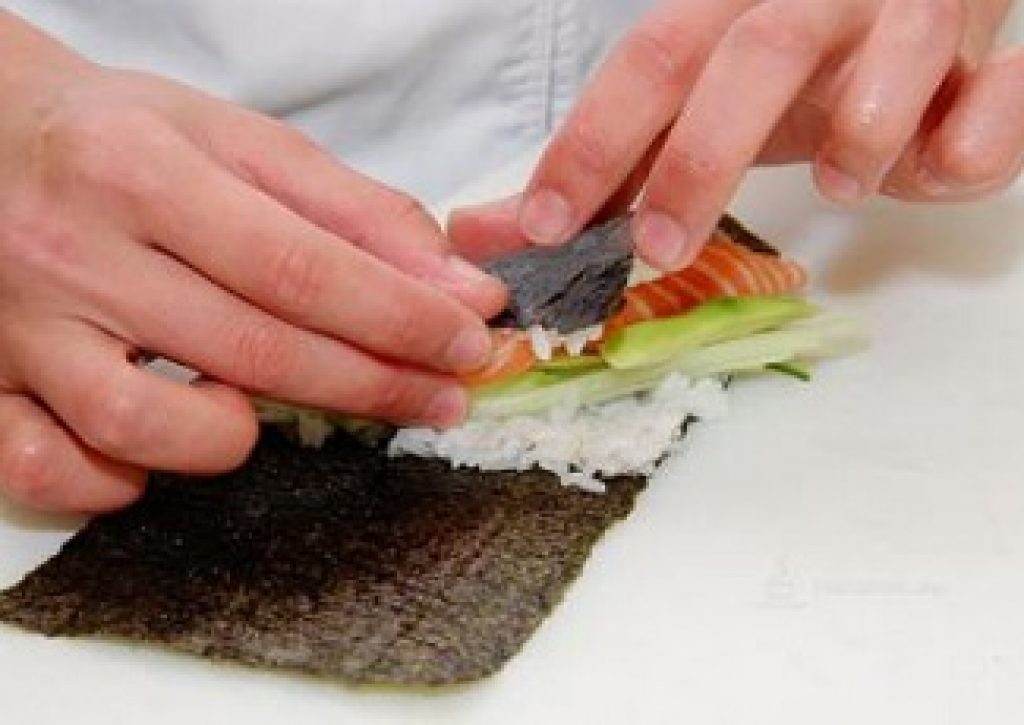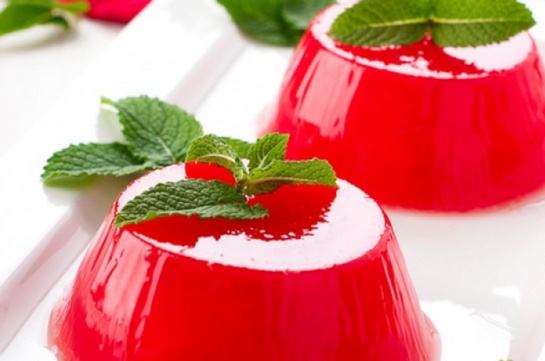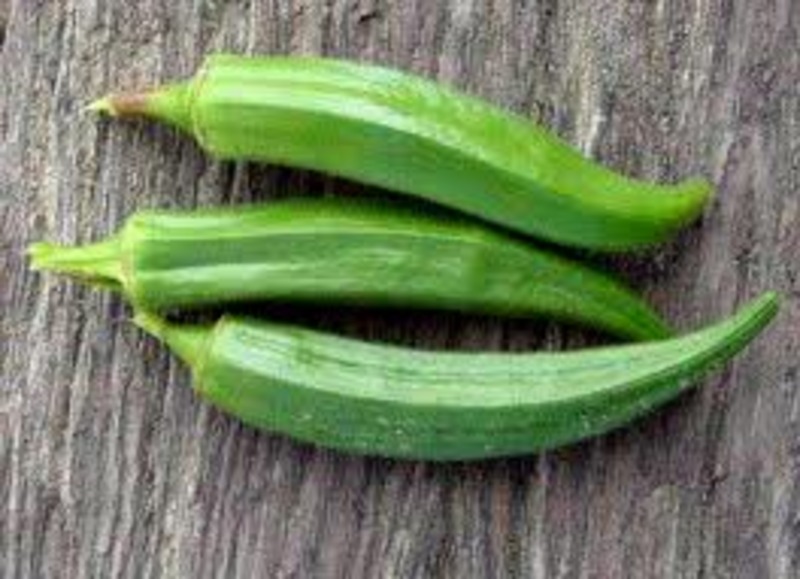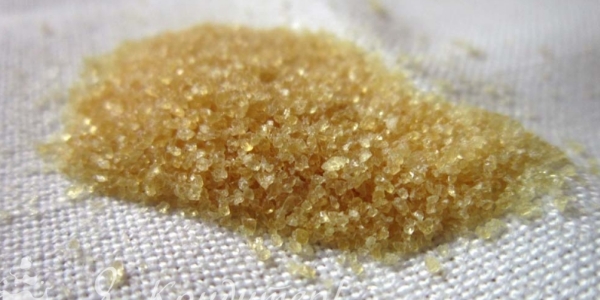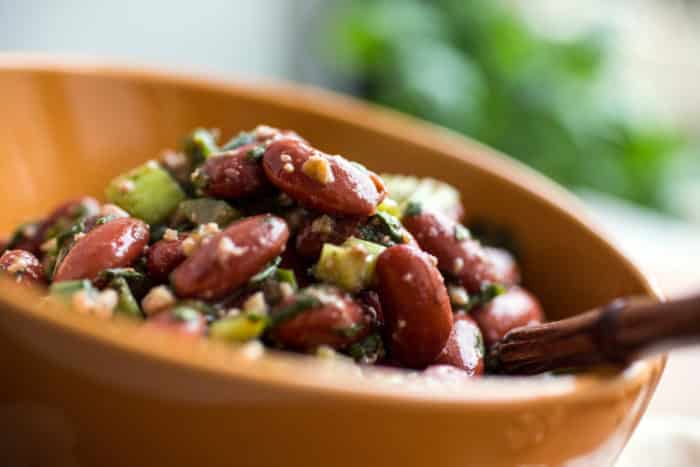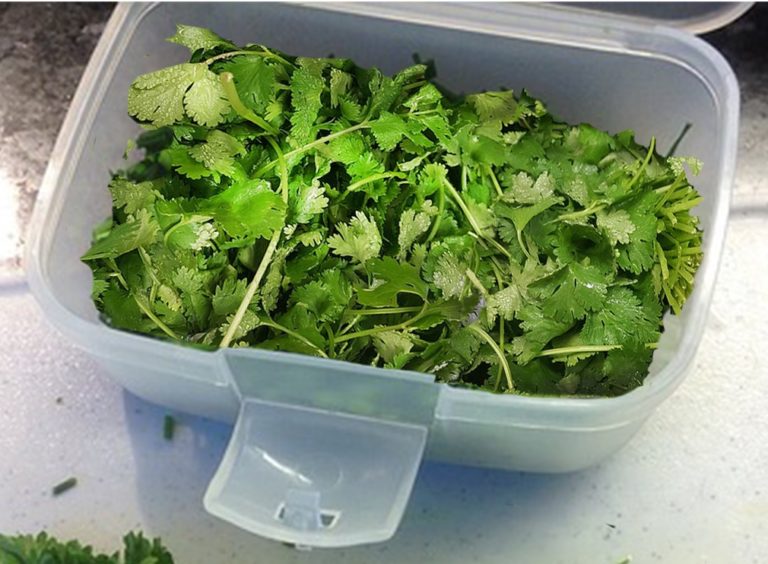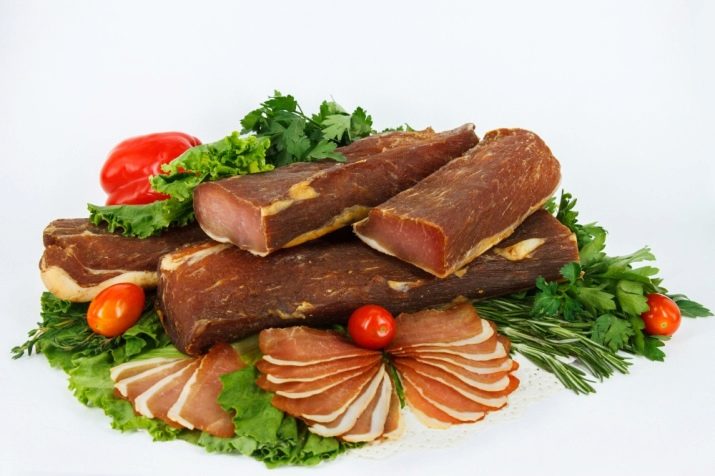The best dishes from okra. What is okra and how is it prepared
Okra (in another way - okra, gombo, ladies fingers) is a little-known product in Russia. Our okra is mainly sold in frozen form. Although the history of the domestic garden economy, there are cases of cultivation of okra in central Russia. For example, it is known that at the dawn of our century, okra was successfully cultivated in the Moscow region (Melikhovo) by Anton Pavlovich Chekhov. Today, in Russia and in our south, summer cottagers began to grow okra.
Usually unripe (three-six-day) fruit ovaries are eaten as soon as they reach 4-6 cm in length. Cut okra with scissors, every 2-3 days, because overripe fruits are not tasty and lose their dietary properties. Okra is not stored for a long time, it can be kept in the refrigerator for no more than 3-4 days and needs to be cooked quickly.
Okra cooking recipe
Okra is not only very useful, but also has a very unusual taste. Of course, the very concept of “Afghan cuisine” itself prepares us for surprises.
I’ll tell you how to cook an okra according to the recipe. In order to cook okra, you will need the following foods.
- Frozen okra - 1 pack, approximately 0.5 kg;
- Onion - 1 large onion;
- Garlic - 3 medium cloves;
- Tomatoes - 3 medium pcs;
- Water - 1.5 cups;
- Coriander - 2 teaspoons;
- Hot pepper - 2 teaspoons;
- Salt to taste.
How to cook okra - recipe
- First, in order to cook okra, it is necessary to peel and finely chop onions, fry it in vegetable oil until a golden hue.
- Then cut fresh tomatoes finely peeled from the skin, add them to the fried onion. Cook min. 5-10 until the water evaporates and appears yellow, often stirring.
- After that, add finely chopped garlic and fry until aromatic.
- When the frying pan for okra is ready, put the okra into a pan, cut into pieces 1-1.5 cm. And mix.
- Now you need to add spices for okra: coriander and hot dried pepper.
- Salt and pour 1 cup of water. Cover the pan and cook for about 20 minutes, sometimes stirring gently so that the okra does not burn. If the water has evaporated and the okra began to burn, you can add another half a glass of water.
In its finished form, the form of okra does not change, it retains its original form. Ready okra is served on small plates with rice or meat.
Okra is ideal as a side dish for lamb, fish. It is rich in beneficial substances, including ascorbic acid and other vitamins. Its seeds contain up to 20% olive oil. It is noticed that okra helps to restore the depleted forces of the body. Due to the fact that okra pods are rich in mucous substances, they are of value for patients with peptic ulcer disease, as well as for those suffering from gastritis. A decoction of okra is used for bronchitis.
Okra (okra) is a green pointed pod of conical shape, distributed in warm climatic conditions (homeland is the area around the Nile in North Africa and the Middle East, more precisely - Ethiopia). It can be grown in cooler areas using special cultivation methods. Okra is a relative of hibiscus, cotton and cocoa.
During World War II, coffee shortages forced Asian and African people to use okra seeds instead of coffee. This phenomenon is called "okra fever." Since then, in the local markets, okru can be found at any time of the year.
Today, this delicious vegetable is known and loved by gourmets from Texas to Timbuktu itself.
Fresh okra pods contain many nutrients: vitamins A, C, K, B6, as well as calcium, iron, thiamine, folate, potassium. This vegetable boasts high protein and dietary fiber. In a word, okra is a vegetarian's dream.

Eating okru is extremely useful for pregnant women because of the high concentration of folic acid, which is involved in the formation of the neural tube of the embryo in the first 4-12 weeks of pregnancy.
Plant mucus and dietary fiber of okra fruits regulate blood sugar by absorbing it in the small intestine. In general, okra is recommended for people with gastrointestinal disorders.
Okra promotes the secondary absorption of water, leaches excess cholesterol, metabolic toxins and excess bile from the body, prevents constipation and bloating, and heals stomach ulcers. Okra promotes the growth of beneficial bacteria in the small intestine called probiotics and helps in the synthesis of vitamin B.
This is an ideal vegetable for those who dream of losing weight without harm to health (in 100 g of pods no more than 40 calories), as well as for people suffering from depression and chronic fatigue, it will help in the fight against pneumonia and tonsillitis, maintain joint mobility, reduce asthma attacks in asthmatics (due to the high concentration of antioxidants). Okra strengthens the walls of the capillaries, is good in the diet of patients with atherosclerosis.
A number of scientific studies have confirmed that okra successfully prevents certain types of cancer (colon cancer), reduces the risk of cataracts and diabetes.
Such a wide range of useful properties of okra led to the fact that scientists began comprehensive studies of this vegetable, and already today a series of successful experiments are carried out to replace blood plasma with active components isolated from bright green mucous pods.
Cosmetic properties
Historians say that many famous beauties of antiquity, Cleopatra from Egypt and Young Guifey from China loved to eat okra. Meanwhile, these green pods can be used for purely cosmetic purposes.
For example, to strengthen the hair, giving it a bright shine, you need to cut them into strips, boil so that the brew becomes as mucous as possible. Then the mixture needs to be cooled, add a few drops of lemon juice and use as a hair balm. The extract, added to the cosmetic cream, prevents the skin from acne and bumps.
How to choose and cook pods
To lose weight by summer, add okra to your diet.
When choosing, pay attention to the appearance of the pods. They should be 7.5-10 cm in length, bright green in color, without moldy spots and dry patches.
They should be stored in a plastic bag in the refrigerator and only 2-3 days. Before use, each pod should be washed thoroughly with running water, and the tips removed.
Harmful properties and side effects
Large pods can have tiny burning spots on the skin that soften after heat treatment, but when raw, can cause significant skin itching. Stock up on gloves!
Do not cook in copper and cast-iron dishes - a chemical reaction will occur that will degrade the appearance of the dish. The pods will become an unpleasant dark brown hue.
There is a lot of mucus in okra, so a drop of vinegar and other acidic components, such as tomatoes, should be added to dishes with its participation. These bright pods are good in salted and fried, deep-fried, they are added to rice dishes, curries and South Asian soups (for example, Gumbo soup).
Okra can be an excellent alternative even in such a delicious dish as ratatouille. Of seasonings, it is compatible with Provencal oil and lemon juice, as well as curry, marjoram, thyme and cayenne pepper.
In general, if you meet okra in the supermarket, be sure to buy it.
Okra, okra, gombo, ladies' fingers - all these are the names of the same vegetable. Okra is a rather valuable vegetable crop of the Malvaceae family. Little is known about the homeland of this plant. Okra is common in India, Africa, North America and the tropical regions. Some indicate West Africa as its place of origin, others do not doubt that the plant first appeared in India. A very large number of varieties of okra are known, therefore the ideas about it are different. Okra grows in Europe, but it got there from Asia. This vegetable is growing in both Russia and Ukraine, which became possible after some warming of the climate. But there are very few people who want to grow Okra.
Okra is an annual herbaceous plant. In height, it reaches 40 cm, and its record height was 2 meters. Okra is a thick and branched plant. Light green leaves are tilted down. The leaves are large and formed from seven blades, although sometimes up to five blades are also included in their composition. Inflorescences are large, yellowish-cream in color, located on the pedicels in the bosom of the leaves. It is in this place that the fruit growth point is located. Among the people, the fruits of okra were called "boxes", since they differ in a four- or octagonal shape. And inside the fruit contains seeds. Okra, like eggplant, loves heat very much. Therefore, it is easier to grow in the southern regions. It has always been this way until amateur gardeners adapted to grow this plant in countries far to the north.
Increasingly, okra can be bought fresh and frozen. Sell \u200b\u200bit on the market. Gathering the fruits of okra, starting in August and ending in November.
Buying a vegetable
When choosing okra, study its appearance. The length of the pods should be about 10 cm (maximum size), but it is better to buy a shorter okra. Ripe fruits are bright green in color; they should not be damaged, moldy, soft or dry. Get fruits young, tender and dense. Okra is found a little reddish in color. To determine if the fetus is overripe, you need to examine it for the presence of a leathery surface. At the same time, the vegetable becomes stiff and fibrous, it is not suitable for eating, they can only spoil the dish.
Okra Storage
Okra is a perishable product. It is stored no longer than three days. To store okra in the refrigerator, place it first in a paper bag. Okra is the embodiment of the desires of a vegetarian, as they say about it, given the high content of useful elements in it. Okra is rich in iron, protein, potassium, calcium, vitamins A, B6, C, K.
Healing properties
The presence of a large percentage of folic acid in okra makes this vegetable indispensable in the diet of pregnant women. Folic acid is involved in the formation of the fetus in the first trimester of pregnancy.
Okra normalizes blood sugar. Vegetable mucus of the okra with its dietary fiber is absorbed in the small intestine. People suffering from an intestinal upset are very useful dishes with okra in the composition.
Okra is considered an ideal vegetable for weight loss and a great helper in the fight against depression, tonsillitis, chronic fatigue.Okra is the best treatment for asthma. Vegetable is highly recommended in the diet of patients with atherosclerosis. In addition, trace elements contained in okra help strengthen blood vessels.
Thanks to okra, excess cholesterol and wastes are eliminated from the body. The vegetable prevents bloating, constipation, helps in the healing of gastric ulcers.
As a result of studies conducted on okra, it was proved that this vegetable is able to prevent colon cancer. Thanks to okra, the likelihood of cataracts and diabetes is reduced.
Vegetable copes with problems that cause potency disorders. Doctors often recommend okra to patients after surgery. Okra contains only 31 calories, so in dietary nutrition it is of no small importance.
In the field of cooking
Okra is very popular in cooking. Young leaves are also used for cooking. The taste of okra has some similarities with asparagus and eggplant. Therefore, recipes for cooking okra have much in common with eggplant recipes.
Okra is prepared in different ways: boiled, stewed, canned, used as part of salads, put in first courses, added to vegetable and meat dishes. It is ideal as a side dish for meat or poultry.
During heat treatment, the vegetable secretes a large amount of mucus. This is very handy if you are preparing the first dish, but if such a quantity of sauce is not prescribed for the recipe, first fry the okra on high heat with the addition of acid, for example, lemon or tomato juice.
Okra seeds are also important, which, after frying, can be used to make a fragrant drink. Seeds can be squeezed to obtain an oil that also has a pleasant aroma.
Okra Meat Platter
- Okra - 1 kg;
- Ground beef or mutton - 0.5 kg;
- Garlic - 5 cloves;
- Tomato juice - 400 ml;
- Vegetable oil;
- Spices - optional.
Preparation: fry okra. Add chopped garlic to the minced meat. Put okra and minced meat in pots, alternating them in layers. Put okra on top. Pour the pots with tomato juice and spices and continue to cook in the oven over moderate heat until the juice is completely absorbed. When the dish is cooked, serve on serving plates.
Okra with vegetables
- Okra in fresh-frozen form - 1.2 kg (two packs);
- Onions - 3 pieces (medium size);
- Bell pepper - 2 pieces;
- Tomatoes (medium) - 5 pieces;
- Carrots - 3 pieces;
- Wine vinegar - 2 tablespoons;
- Olive oil - 80 ml;
- Vegetable oil - 80 ml;
- Hot green pepper (medium) - 0.5 pieces
- Garlic - 5 cloves
- Tomato paste - 2 tablespoons;
- Parsley, dill, cilantro.
Preparation: two separate cauldrons (pans) are required. Thaw okra completely, pour cold water for 10-15 minutes, adding a little wine vinegar. Tilt the vegetables in a colander to glass the water.
In the first cauldron, heat vegetable oil, put onions, cut into half rings, fry until golden brown, put coarsely grated carrots and continue to fry for about 15 minutes, then add bell pepper and hot pepper. Stew vegetables until the bell peppers are soft.
Put another pot on the fire, heat olive oil, put chopped tomatoes, add 2 tablespoons of tomato paste. Simmer, cover for about 15 minutes, then put okra and continue cooking vegetables, stirring, for about 20 minutes. 5 minutes before the okra is ready, add chopped garlic to the dish.
In conclusion, mix the contents of two cauldrons, add ready-made vegetables with fresh herbs, add salt and pepper to taste, and then let the dish stand on the fire for about 5 minutes.
Okra with lemon
- Okra - 250 g;
- Lemon (you can take a spoonful of vinegar instead) - 1 pc.;
- Sugar - a teaspoon;
- Vegetable oil - 1 dessert spoon;
- Salt.
Cooking. Boil okra until soft in salt water, then drain the water, dry the vegetables, cut into small pieces (2.5 cm). Pour the dish with lemon juice or vinegar, add sugar, oil. Mix everything and leave to soak before serving.
Okra stew
- Okra - 600 g;
- Onion - 2 pieces;
- Vegetable oil - 5 tablespoons;
- Red pepper - 1 teaspoon;
- Tomato - 3 spoons;
- Lemon - 0.5 pieces;
- Salt.
Preparation: peel the fruits, immerse in water with the addition of vinegar. Fry chopped onion in vegetable oil, add ground red pepper, put the prepared okra pods, add salt. Put tomatoes, sliced, lemon slices. Cook vegetables on a quiet fire without water, without stirring. Before removing from heat, add chopped parsley.
Okra Blanched
- Dried okra - 800 g;
- Onion - 200 g;
- Vegetable oil - 80 ml;
- White wine - 120 ml;
- Tomatoes - 200 g;
- Mushrooms - 200 g;
- Ground black pepper, parsley, salt.
Preparation: Blanch okra in water with acid. Pour the peeled onion with cold water, boil, add to blanched okra. Peel the tomatoes, free from seeds, cut mushrooms, season everything with wine, oil. Add parsley, pepper, salt. Place the vegetables in a clay container, close tightly, cook over low heat for about 40 minutes. Serve cold.
2014 -8-11 10:15
| align \u003d right\u003e |
The stem of the acre is thick, covered with hard sparse villi, woody. It has a branch at the basal part, can have from 3 to seven stems. The leaves are painted in dark or light green color, grow on long petioles, five or seven lobed, rather large, pubescent. It has large flowers that are located singly, the color is yellow-cream.
Pyramidal fruits, multi-seeded capsules, similar in appearance to pepper pods, covered with hairs on top, can grow up to 25 cm.
Plant biology
Okra grows in tropical Africa, in vivo it can be found on the Antilles. It is widely used in Africa, Asia, Southern Europe, as well as in America. It prefers moist, well-drained soils, it requires a lot of heat. It does not tolerate temperature drops. The optimum temperature for growing 25 ... 35 ° C. Harvesting is carried out repeatedly, after 3 ... 5 days, picking young green fruits. The varieties "Dwarf green", "Green velvet", "White velvet" are widely known.
Okra, okra, okra, gombo, ladies' fingers - these wonderful plants are known under such names in different parts of our planet. The popularity of okra in Russia is growing every year, as evidenced by its presence in an increasing number of suburban areas.
Chemical composition
Okra fruits contain many beneficial substances. It contains many vitamins and minerals. By the content of vitamin C, the fruits of this plant approach citrus fruits. Okra seeds contain up to 20% oil, which in its composition is similar to olive. In the pods there are many mucous substances, plant proteins, organic acids, carbohydrates, various mineral salts and vitamins.
Okra contains:
- vegetable protein, which is important for vegetarian nutrition;
- vitamins A and C, vitamins of group B;
- mineral salts of potassium and magnesium;
- copper, zinc, iron, vanadium;
- mucous substances;
- cellulose.
Okra is a godsend for those suffering from diseases of the gastrointestinal tract. Mucous substances protect the stomach from irritation with ulcers and gastritis. Plant fibers are useful for normalizing digestion.
Dishes with okra are a good prevention of atherosclerosis and vascular strengthening.
Okra is a godsend for those who are on a diet. It is a low-calorie product, not more than 40 calories per 100g.
In the homeland, okra has long been used as a means of combating lung diseases, tonsillitis and colds, making decoctions and infusions from plant boxes.
Due to the large number of mucous substances, acre fruits are used for the treatment and prevention of diseases of the gastrointestinal tract. It is proved that eating food prepared from this plant helps to restore strength after illness and intense physical labor. Also, the fruits of acres have a beneficial effect on sexual potency. Dishes or decoction of frozen or fresh fruits are used to treat pulmonary diseases.
In the Balkans, okra (aka okra) is considered a strong aphrodisiac!
When you buy it in the market, you will hear some serious and comic comments and advice on how to “apply” it to your husband in order to act better ...)))
Plant application
Acre fruits are widely used in the preparation of various dishes. To their taste, the pods resemble asparagus and eggplant. It is not recommended to store fruits for a long time, as they become strongly fibrous. Soups and salads are prepared from the fruits, they are dried, canned and frozen. It is served as a side dish for a variety of meat and fish dishes. It is combined with garlic, tomatoes, capsicum and other vegetables and spices. From ripened dried seeds, a drink is made that resembles coffee to its taste.

Okra in the USA
In the South and Midwest of the United States, okru are often baked in an egg, cornmeal and deep-fried or just in a pan. In Louisiana, okra is the most important ingredient in jambalaya, the super-popular rice dish of Kajun cuisine. In the southern states of the USA and in the Caribbean islands with okra, a rich gambo soup-stew is being prepared, and the sea is the choice for its preparation.
Young pickled okra rolled up in jars is very popular - it tastes somewhat like pickled gherkins.
Not only the fruits of okra are involved. Okra leaves are prepared like the tops of young beets, or served fresh in a green salad.
During the American Civil War, okra was even used as a coffee substitute. The South was then in an economic and military blockade by the North and the supply of coffee from Brazil was interrupted. From the dry overcooked seeds of okra, southerners prepared a drink reminiscent of the color and taste of coffee. Caffeine-free, of course.
Okra Worldwide
For several centuries, okra has taken a strong place in the cuisine of different nations. In Egypt, Greece, Iran, Iraq, Jordan, Lebanon, Turkey, Yemen, okra is the most important ingredient in thick boiled and stewed dishes of meat and vegetables, such as European stews and sautés.
In Indian cuisine, okru is often added to various gravy sauces for meat and fish dishes. In Brazil, the frango com quiabo dish is very popular -
Okra (Okra) with chicken
| Ingredients for Okra with Chicken | |
|
|
| Recipe "Okra (Okra) with Chicken" | |
|
The dish is served hot. Preferably with a piece of feta. You can also garnish with olives and colored peppers. |
By the end of the 20th century, okra became very popular in Japan, where local chefs willingly add it to tempura or serve grilled okra with soy sauce.
Ocra selection and cooking
Okra is a tropical plant and grows best in warm climates. Fruits usually ripen by July - August, and nature does not give much time for harvesting - only four or five days.
It should be bought when it is young, tender and firm to the touch. Fresh fruits can be stored in a paper bag at a temperature of at least 5 degrees, otherwise the okra quickly deteriorates. Unfortunately, in a fresh - unfrozen - form, this vegetable can be stored for only two to three days.
The okra should not be too large: fruits over 12 cm are hard and tasteless. Usually this vegetable should be a juicy green color, although occasionally red varieties come across.
Okra is a rather sticky vegetable, even “sticky”. To avoid excessive “snotty” of the finished dish, it should be washed immediately before cooking, and cut into fairly large pieces.
In India, okru are stewed and baked, cooked in pots with meat, stuffed and pickled. She is an essential part of Vedic cuisine.
Here is the most simple recipe .
Okra-okra pods are washed and immediately wiped so that they are not covered with mucus. Cut, boiled in salted water for 5-8 minutes. Okra broth can be used for soups and broths.
Boiled okru is seasoned with ghee - melted butter, dill, salt, pepper.
You can still cook fried okru.
In ghee or butter, fry the spices. Their set may be different, but in the average case they take ajvayn, cloves, curry leaves, chili, turmeric, coriander, sambar masala.
Add okru chopped in slices, fry everything together, if it sticks, add a little water and cover with a lid. Frying takes a little over 5 minutes.
Salad with okra
- 0.5 kg of fresh okra pods,
- olive oil for dressing,
- half a lemon,
- salt, freshly ground black pepper,
- greens (parsley),
- small tomatoes for decoration.
Okra pods with a soft cloth or glove to clear of pubescence, carefully cut off the sharp tip and the stalk. Dip in boiling salted water for 5-7 minutes. Fold blanched pods in a colander. After the water drains, put in a salad bowl or a deep plate. Separately squeeze the juice from half a lemon, mix it with olive oil and pour okra with this mixture. Pepper to taste, cover with chopped herbs, garnish with tomato slices.
Cabbage soup with okra and sorrel
- 200 grams of okra pods (fresh or frozen),
- 1 bunch of sorrel,
- 2 small potatoes,
- 1 medium carrot,
- green onions and herbs (to your taste),
- 1 tbsp olive oil,
- 1 clove of garlic,
- 1 boiled egg per serving of cabbage soup,
- lemon juice and sour cream (to your taste)
Throw chopped potatoes and carrots into boiling salted water (approximately 1.5 L). Okra pods cut into not very small pieces or halves. If you use frozen okra, it must first be thawed. Sorrel, green onions and herbs are finely chopped. 15 minutes after the vegetables, add all the greens, okra and olive oil. Simmer for another 5 minutes, add crushed or finely chopped garlic and lemon juice.
When serving, add boiled egg, diced into cubes, to the cabbage soup, season the cabbage soup with sour cream.
Okra Dessert
- small okra pods,
- refined vegetable oil,
- sugar syrup,
- icing sugar
Fried okra pods thoroughly washed and free from pubescence should be deep-fried using refined vegetable oil. Tilt the fried pods into a colander or net, drain excess oil. For 3-5 minutes, lower the pods in sugar syrup, dry and sprinkle with powdered sugar.
Okra Chicken Breast Recipe
A dry chicken breast can be transformed using a tender or spicy okra sauce. To do this, cook the fried chicken pieces for a few minutes with one of the gravy options:
- fry onions, carrots, peeled tomato slices, sweet pepper, add pieces of okra and cayenne pepper to taste, cook for 10-15 minutes without stirring, add finely chopped garlic 1-2 minutes before being ready;
- stew okra until soft in white wine, adding Provencal herbs.
Okra recipe with meat in a pot
To make the dish less greasy, you do not need to fry the ingredients before laying them in a pot.
Take beef or pork, cut into small pieces.
Cut the okra into slices.
Choose a style of dressing:
- mediterranean - tomato juice, basil, thyme, oregano, garlic;
- eastern - soy sauce, garlic, ginger.
Lay out part of the okra at the bottom of the refractory dishes, then the meat, and the remaining vegetables upstairs. Fill one of the options for refueling and bring in the oven until ready. Loose rice is suitable for garnish.
Okra with beans
Okra, fruits: 500 grams
Zarna young beans: 1 cup
Butter: 2 tablespoons
Garlic
Dill, parsley
Cucumbers, Tomatoes
Salt to taste
Boil okra fruits in salted water. Boil grains of young beans until tender. Mix boiled vegetables, season with butter and chopped garlic, slightly diluted bean broth. When serving, garnish the dish with parsley or dill, slices of cucumbers and tomatoes.
Okra baked with egg
Okra, fruits: 750 grams
Onions: 2 pieces
Eggs: 3 pieces
Milk: 0.5 cups
Peel okra fruits, boil in salted and acidified vinegar water. Drain the water. Put half of the boiled amount of vegetables on a greased baking sheet. Put rings of fried onions on top, cover it with the remaining okra fruits and pour in a mixture of beaten eggs and milk. Bake in a hot oven until golden brown. Serve sprinkled with herbs.
Okra Tortillas
Boil 300 g of okra fruits, pass through a meat grinder, add 3 tablespoons of oatmeal soaked in water, 1 egg, 1 chopped onion, salt and mix everything. From the resulting mass to form balls, which by pressure turn into cakes. Breast them in breadcrumbs and fry until light brown. Serve with sour cream to the table.
Thick okra soup
1 kg. okra, 500 grams of meat (beef or lamb), head of garlic,
3 tomatoes, 1 onion, 4 - 5 tablespoons of tomato paste,
a teaspoon of coriander, salt, seasonings for meat.
Cut the meat into pieces, pour a small amount of water and let it boil. Drain the water, rinse the meat again and again set to cook. Add the onion, black peas, salt, bay leaf to the broth and cook until the meat is ready.
Wipe the okra with a towel to remove hairs, rinse, allow water to drain. Carefully cut the stem to prevent damage to the pod. Heat the vegetable oil well and put okra in it, fry for 5 minutes. Okra will turn bright green and dry slightly. Okra must be fried so that it releases less mucus into the soup and does not fall apart when cooking.
Strain the meat broth, put in it grated tomatoes, tomato paste, meat and okra. Grind a few cloves of garlic, put the rest whole in the broth, add coriander. Let the soup boil and cook over low heat for 10 minutes. The soup should be very thick, about like a stew. Can be served with a side dish of crisp white rice.
4 pounds of fresh okra (1.8 kg is a lot, a big bag. You need to take a quarter of the calculation for a jar or two). It is better to choose small pods, with the little finger.
1 pound of fresh jalapeño or serrano (sharpened) thinly sliced
4 cups (1 L) table 6% vinegar
4 cups of water
1/2 cup coarse salt. Brine (vinegar-water-salt) is best done with a margin.
10-12 large cloves, finely chopped
a dozen or two twigs or umbrellas of dill, to your taste and size
a quarter cup (4 tbsp) whole mustard seeds
Wash the okra pods by cutting off the ends and stems, leaving about a centimeter of the stem to make it convenient to eat with your hands. Pack vertically in jars. Chop the pepper and put in jars on top of the okra. Put the rest of the spices in the brine and bring to a boil, immediately pour into banks, twist.
Okra is a rather valuable food product, although in our country this exotic vegetable is not very common. Many people do not even know what it is and how it is eaten. But okra is very good for health. Therefore, it is worth learning more about it and taking note of some culinary recipes with step-by-step photos.
Okra: what is this vegetable?
Okra comes from the southern regions, but is widespread throughout the world. And in different countries it is called differently. Outwardly, this overseas vegetable resembles a pod, only its surface is faceted and covered with small hairs. And to the taste in fresh form it most resembles, and in the cooked one - zucchini and green beans.
Attention! Only young, not fully ripened fruits up to about 10 cm long and not older than 5 days from the time of setting are used for food.
With age, the okra flesh coarsens, becomes too stiff and unsuitable for eating. But grains of fully ripened pods can be used differently. Exotic lovers dry them, grind them and use them as a kind of substitute for coffee.

Beneficial features
Okra contains many different valuable substances. It is also rich in coarse fiber, which is very beneficial for the body. This vegetable is dietary and is widely used by those who seek to lose weight and lose weight. It is useful for pregnant and lactating women, as it contains a lot of folic acid. It also has a beneficial effect on the male body in case of problems with potency.
But the useful properties of the product are not limited to this. This vegetable is used for many diseases and to restore strength in the postoperative period. It has practically no contraindications for use, with the exception of only individual intolerance to the product. It lowers sugar levels, has a beneficial effect on various ailments of the digestive system, and is used to treat oncology and to prevent these diseases.
This exotic vegetable is good for chronic fatigue, depression, and heavy physical exertion. It is also used for:
- atherosclerosis;
- various respiratory diseases;
- some eye diseases.

Features of cooking and product preparation
In the preparation of okra is very simple. But do not expose it to prolonged heat treatment. Only a few minutes will be enough for cooking. But it is advisable not to keep the product on fire for more than 20-25 minutes.
It is very important to pay attention to the preliminary cooking of the product. Thin hairs covering the skin must be cleaned off. If this is not done, the dish will be bitter. In addition, villi on the surface of a vegetable may cause allergies in some people.
Tip. Hair from the surface of the okra along with the skin will be much easier to remove if you douse the vegetable with boiling water.
You can cook a wide variety of dishes. It is suitable for canning, freezing, preparing snacks, side dishes, first courses. The product goes well with a variety of vegetables, cereals and seasonings, with various types of meat, fish, seafood. During heat treatment, unless overexposed okra is on fire, and when frozen in a vegetable, all its useful properties are preserved. The proposed recipes will help you get started with this overseas product.
Meat recipe
Okra with meat is a hearty dish, and boiled rice is well suited for garnish. For 1 kg of okra, you need to take 250 g of beef, medium-sized onions, 1 hot pepper, a small package of tomato puree (can be replaced with tomato paste, only in a smaller volume, since this product is more concentrated), roasting oil, salt and seasonings to taste .
Cooking:
- Cut the meat into pieces, chop the onion finely, lightly fry these prepared products together with pepper in oil in a pan, then salt, add spices. After frying, you can remove the pepper so that the dish does not taste too spicy, or leave it.
- Pour the contents of the pan with water, bring to a boil and keep on fire for about half an hour.
- Separately, fry okra, but not for long, but only until it becomes golden in color.
- About 10 minutes before the meat is ready, add the fried okra and tomato puree or paste. When it becomes soft and the puree begins to thicken, the dish will be ready. Serve with rice or another side dish.
Potatoes in pots
Okra goes well with various vegetables, including potatoes. A dish baked in the oven will be not only tasty, but also healthy. For 500 g of okra, you will need 250 g of potatoes, a glass of tomato juice, 2 cloves of garlic, vegetable oil, salt and spices to taste.

Okra cut
Cooking:
- Wash okra, peel, then cut into circles or leave whole. After lightly fry the vegetables in oil.
- Peel and cut potatoes in any preferred way. Finely chop the garlic (pass through a press). Stir the potatoes with garlic. Mix tomato juice with salt and spices.
- Okra and potatoes mixed with garlic, put in baking pots, pour them in tomato juice and place in the oven.
- Set the temperature to 180 degrees, bake the dish in the oven for about 30-40 minutes.
- When ready, serve it with fresh herbs and sour cream.
Garnish
This vegetable makes an excellent side dish. It can be used as a separate dish or served with meat or fish. To prepare such a tasty and light side dish you will need 0.5 kg of okra, 3 medium tomatoes, 2 onions, any vegetable oil, about 100 ml of water, salt, seasonings to taste.
- The fruits of okra must be washed and peeled. Then they can be coarsely cut or cooked whole.
- Peel the tomatoes. And to make it easier to do this, it is better to pour them over with boiling water. Finely chop the tomatoes after.
- Chop the onion and fry in oil until it gains a slightly golden hue.
- Then add okra to the pan to the onion. Then, after 10 minutes, put the same tomatoes there, salt it all, add seasoning.
- Stir the contents of the pan, pour in the water and simmer after boiling for about 20 minutes over low heat without covering.
- Ready-made side dish is served hot.
Such an overseas vegetable as okra is not only an extremely healthy product, but also very tasty. It is quite simple to prepare, there are many interesting recipes. You can also come up with something of your own or take as a basis various recipes with other vegetables. And in order to preserve all its useful properties during cooking, it is advisable not to keep okra for too long on fire.





